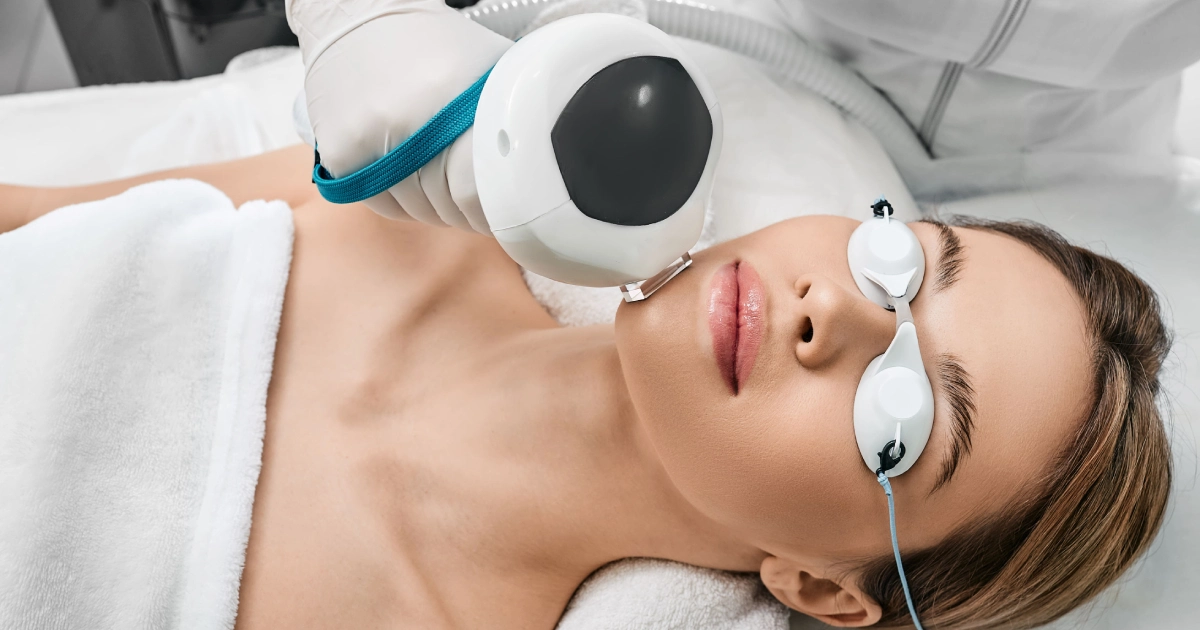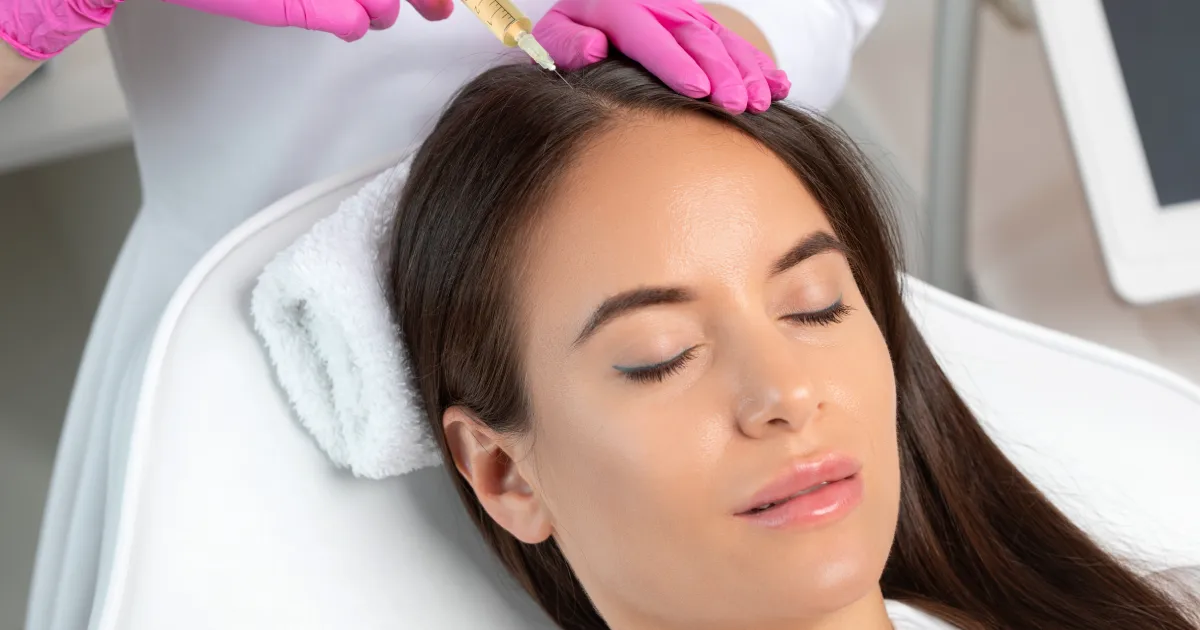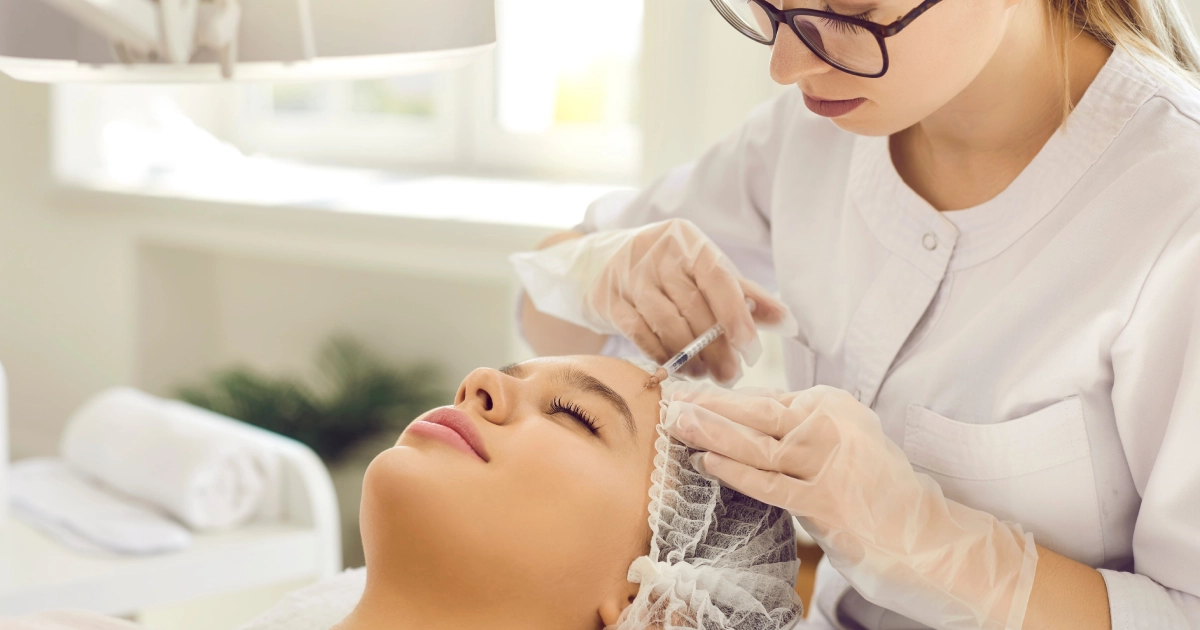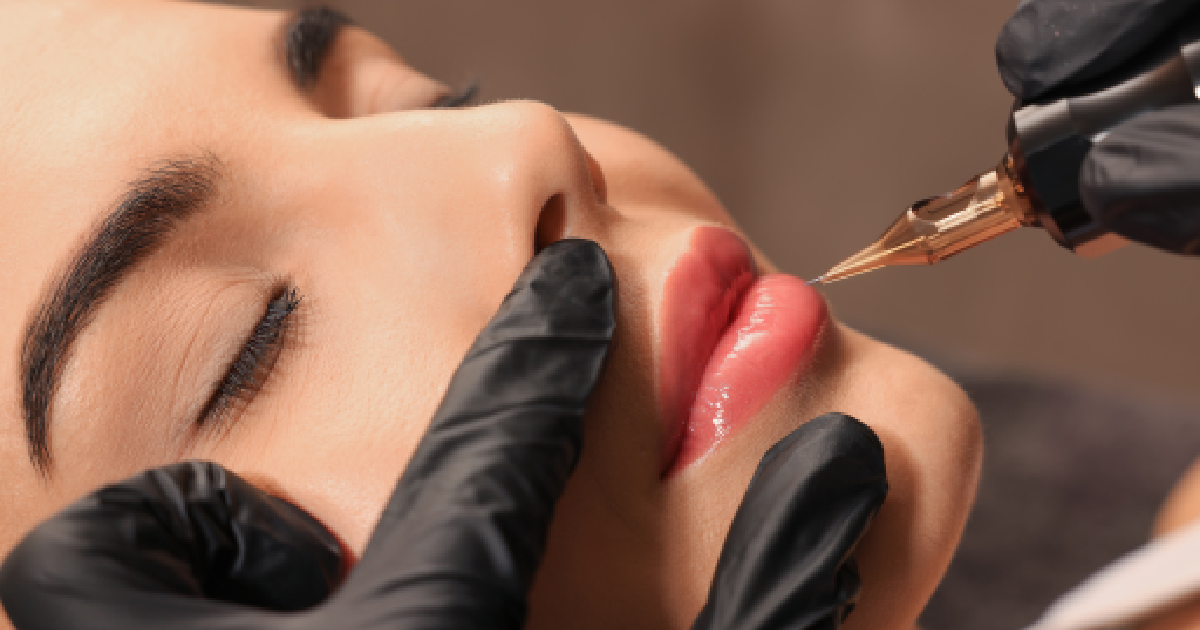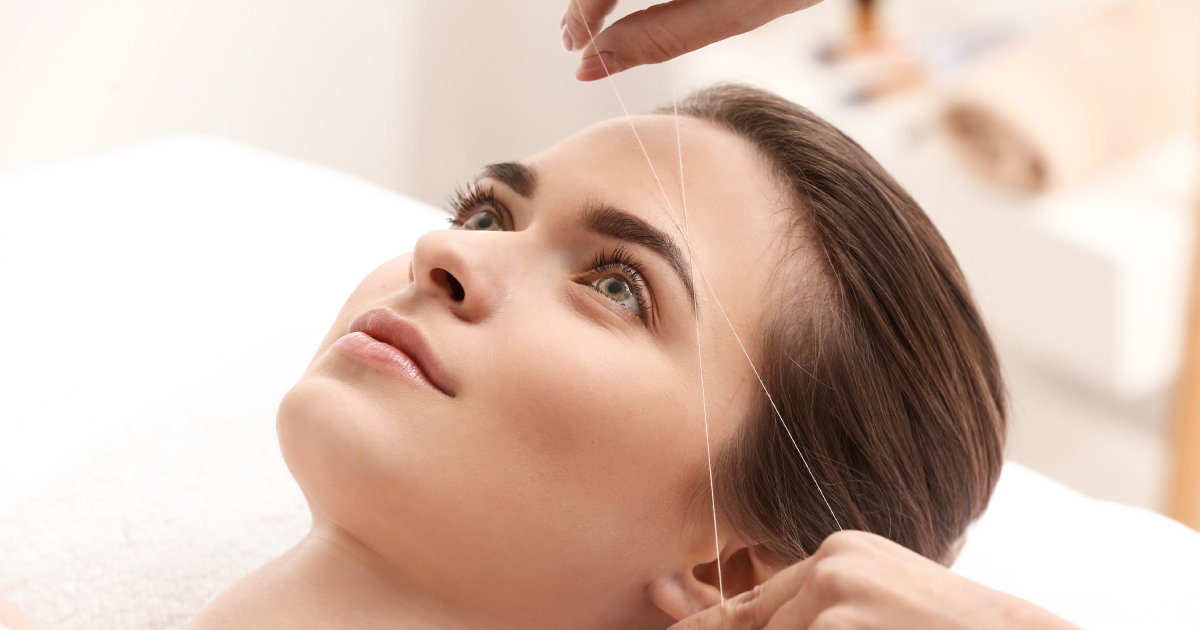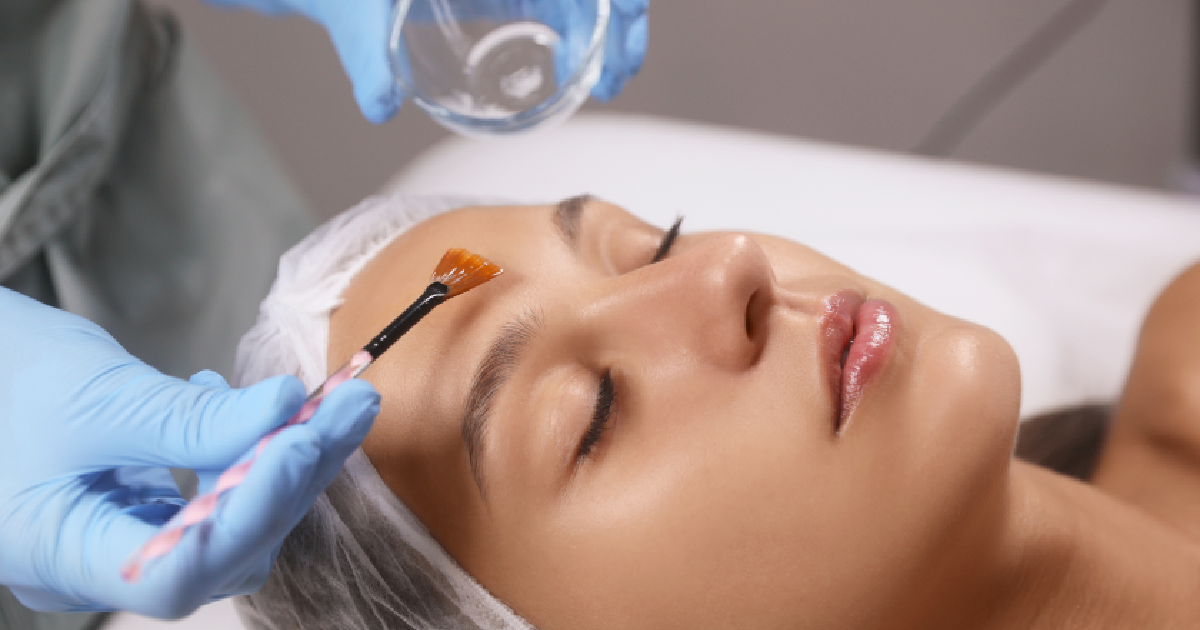For many, scars are more than just a physical mark. They are lingering reminders of past experiences, sun damage, acne scars, and skin aging, causing self-consciousness and impacting our self-esteem.
However, modern medical advancements have introduced various cosmetic treatments for these skin conditions. And one innovative solution is the CO2 laser treatment, more specifically known as fractional CO2 laser resurfacing.
This blog post will provide an overview of CO2 laser treatment for skin rejuvenation to help you decide if it’s right for you.
What Is Fractional CO2 Laser Resurfacing?
Fractional CO2 laser resurfacing is a dermatological procedure that uses a carbon dioxide (CO2) laser to rejuvenate the skin by reducing or eliminating the appearance of wrinkles, facial atrophic acne scars, sun damage, and other skin irregularities.
The term “fractional” refers to the laser’s technique to deliver energy to the skin. Instead of affecting the entire skin surface, it targets small columns of skin, leaving the surrounding areas untreated. These treated zones, known as microthermal treatment zones, stimulate the body’s natural healing process and promote collagen production and new skin cells.
This treatment results in smoother, more even skin tone, and youthful-looking skin. The fractional approach also often has a shorter recovery time and reduced complication risks compared to traditional full-field resurfacing techniques.

Benefits of Laser Carbon Dioxide Resurfacing Treatment
Now, let’s delve into the numerous benefits of the CO2 Laser for scars.
- Aesthetic enhancements: This transformative process makes the skin appear smoother and more even-toned. It can help tighten skin, and it may also help improve eyelid skin laxity and minimize the appearance of baggy eyes.
- Reduction of discomfort: In some cases, scars can cause physical discomfort, including itchiness and tightness. CO2 laser alleviates these problems by promoting skin regeneration and reducing inflammation. As the scars fade and the skin undergoes renewal, you can experience relief from itching and overall dermal discomfort.
- Improved texture and flexibility: The laser helps restore the skin’s texture and flexibility. The resurfacing process reduces scarring, discoloration, and hyperpigmentation while boosting collagen production for improved elasticity.
- Enhanced skin health: fractional CO2 laser for scars can also improve skin health. Fractional treatment enhances your skin’s natural healing capabilities by stimulating blood flow and rejuvenating collagen production. It can also improve the skin’s resilience against environmental stressors and preserve its moisture content, leading to healthier, more resilient skin.
- Boosted confidence and emotional well-being: One of the most significant benefits of CO2 laser is its impact on self-image and emotional well-being. Because it reduces scar visibility, it positively impacts your social interactions, self-esteem, and overall quality of life.
What Happens Before, During, and After Fractional CO2 Laser for Acne Scars?
Here’s what you can expect for your laser treatment for acne scarring:
Preparing for Laser Skin Resurfacing
Preparing for a fractional CO2 laser treatment involves several steps to ensure the best results and minimize potential side effects. Here are some general guidelines:
- Avoid sun exposure
- Discontinue certain skincare products
- Medical evaluation
- Take pre-treatment medications, if necessary
- Cleanse your skin
- Arrange for transportation
On the Day of The Treatment
To start, remove any jewelry in the treatment zone. You’ll be guided to the treatment room when you arrive at the clinic. Then, your skin will be cleansed thoroughly to remove dirt, oil, or makeup.
- To minimize discomfort during the procedure, a topical anesthetic cream will be applied to the area to be treated. This is usually left on for about 30-60 minutes.
- Once the anesthetic has taken effect, the treatment begins. Your practitioner will pass the CO2 laser device over the skin, delivering short pulses of light to the targeted areas. You might feel a slight stinging sensation, similar to the snap of a rubber band against your skin.
- After the procedure, your skin will be cooled, and a protective ointment or dressing may be applied to soothe the skin and promote healing.
- Before you leave, you’ll be given specific aftercare instructions. This usually includes moisturizing skin, avoiding sun exposure, and using a gentle cleanser.
Post-Treatment Care Essentials
Post-treatment care is vital. After rearranging during the CO2 laser, your newly treated skin requires the utmost care. The application of a topical ointment, such as Aquaphor, is also part of the post-procedure aftercare. Your barrier ointment or cream is to be applied daily, and the treated areas should be covered with a non-stick dressing material wrapped in gauze.
How Many Sessions Do I Need?
Perhaps you’re wondering, “How many sessions do I need to book to see an effective result?” Patience is vital with the CO2 Laser treatment, as it usually takes multiple sessions to realize its full potential. On average, it requires six to 10 treatments with a recommended four-week interval between every session.
Remember, the best things often take time, and skincare is no different. You can compare co2 laser for scars before and after pictures to see the result yourself.
What Is Ablative Laser Resurfacing?
It’s important to note that fractional CO2 laser differs from ablative laser resurfacing. Ablative laser resurfacing works by removing, or “ablating,” a thin layer of skin to eliminate old, damaged skin cells and stimulate the growth of new, healthy cells.
During the procedure, a laser sends intense pulsed laser light into the surface of the skin. This light is absorbed by water molecules in the skin tissue, leading to rapid heating and vaporization of the skin cells. This process removes the outer layers of aged or sun-damaged skin. As the wound heals, new skin forms that’s smoother and tighter, reducing the appearance of wrinkles, scars, blemishes, and in some cases, precancerous skin growths.
However, ablative laser resurfacing is not suitable for everyone. It requires a significant recovery period, usually around two weeks, during which the skin may be raw, swollen, and sensitive. Post-treatment care is crucial to prevent infection and ensure the best results.
Insurance Coverage for Carbon Dioxide Laser Resurfacing
In general, CO2 laser resurfacing is not covered by insurance, as it is considered a cosmetic procedure. Most medical insurance companies categorize treatments like CO2 laser resurfacing under elective procedures intended for aesthetic improvement, which are not eligible for coverage. However, there may be exceptions if the procedure is being performed to address a medical condition or improve function. It’s essential to check with your specific insurance provider to understand what your policy covers.
Final Thoughts
Fractional laser for scars, including acne scars, offers hope for anyone seeking to transform and revitalize their skin and overall appearance. This method uses laser technology to renew skin texture and remove visible imperfections, including surgical scars and mild scarring from acne. With a significant investment in time and patience, the treatment brings promising results, revealing a rejuvenated complexion and enhancing self-esteem.
It’s essential to seek advice from a knowledgeable healthcare provider, preferably a dermatologist or a cosmetic surgeon, before undertaking CO2 laser treatment for scars.
Ready to say goodbye to those pesky scars? Let’s embark on your journey toward flawless skin together. Call us to schedule your consultation today and explore the transformative effects of CO2 laser treatments.

